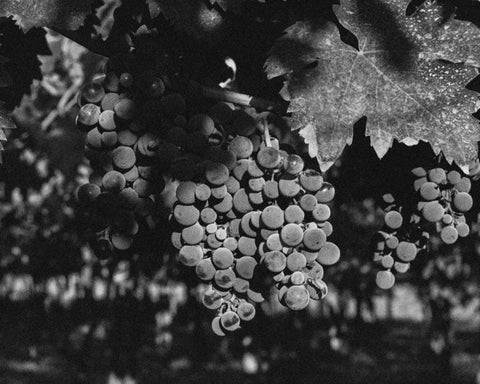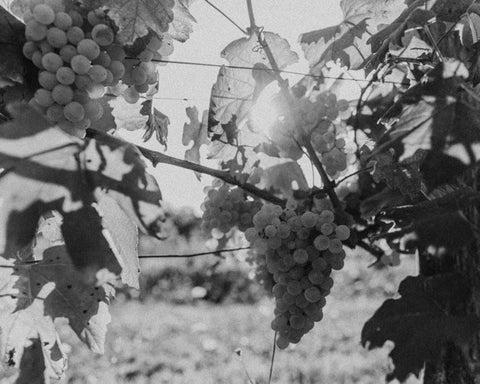Champagne, located in northeastern France, borders Belgium to the north and the regions of Île-de-France and Burgundy to the south. Champagne combines natural beauty, architecture, a variety of culinary offerings, and, of course, the most famous sparkling wine in the world, also called Champagne.
The region's wines, shaped by its diverse terroir and climate, are recognized as benchmarks for quality and endless inspiration for hundreds of winemakers worldwide. We can safely say that Champagne molded the history of viticulture and winemaking.
History of Champagne
Champagne, strategically positioned along the Marne River and at the crossroads of various civilizations, has been a region of significant historical importance. Its history is a rich tapestry woven from the influences of ancient tribes, Romans, and French monarchs, each leaving an indelible mark on the region's culture and traditions.
The region's Roman period began in the 1st century BCE, marking the start of Champagne's rich cultural heritage. The Romans founded several cities, including Reims, which became an important center of trade and culture. These ancient cities flourished, leaving behind impressive ruins and architectural wonders that continue to draw admiration today.
Following the fall of the Roman Empire, Champagne underwent various transformations under the Franks and later the French crown. The region's strategic location made it a crucial area for trade and military movements throughout the medieval period.
The Champagne fairs in the 12th and 13th centuries significantly influenced the region's economic and cultural development. These fairs attracted merchants across Europe, turning Champagne into a bustling hub of commerce and culture.
The 18th and 19th centuries saw significant economic and infrastructural development in Champagne, driven by the wine trade and the industrial revolution. Vineyards were replanted, and new winemaking facilities were built, resulting in a burgeoning wine sector. The 20th century brought challenges and advancements to Champagne. The region faced economic hardships during the World Wars, but its resilient spirit and cultural richness helped it navigate these difficulties. The post-World War II period saw significant development in infrastructure, tourism, and the wine industry, establishing Champagne as a prominent player on the global stage.
Terroir of Champagne
Champagne's terroir is as diverse as its history, characterized by various microclimates, soil types, and elevations. The region's varied landscape, from the rolling hills to the river valleys, is crucial in shaping its unique viticultural landscape.
The region enjoys a continental climate with cool temperatures, which is ideal for the slow ripening of grapes. The soils are predominantly chalky, which provides excellent drainage and imparts a unique minerality to the wines. These factors combine to create the distinctive terroir of Champagne.
The Geology of Champagne
Champagne's geology is marked by its diverse soil types, providing a fertile ground for vines to thrive.
Montagne de Reims: Known for its chalky soils, which provide excellent drainage and are essential for growing high-quality Pinot Noir grapes.
Vallée de la Marne: Characterized by a mix of clay, sand, and chalk soils, ideal for growing Pinot Meunier.
Côte des Blancs: Featuring predominantly chalky soils, this area is renowned for producing some of the finest Chardonnay grapes.
The diverse terroir of Champagne allows for the cultivation of a wide range of grape varieties, each expressing the unique characteristics of its growing region.
Climate and its Influence
Champagne's climate is predominantly continental, characterized by cool temperatures, which are ideal for the slow ripening of grapes. The region's varied topography and proximity to the Marne River create numerous microclimates, each contributing to the distinctiveness of the region's wines.
The Grapes of Champagne
Champagne is home to several grape varieties, each adapted to the region's unique terroir. The most notable are Chardonnay, Pinot Noir, and Pinot Meunier.
White Grape Varietals
Chardonnay: Known for its crisp acidity and citrus flavors, Chardonnay is a key grape for Champagne's white wines and is often used in the finest Blanc de Blancs Champagnes.
Red Grape Varietals
Pinot Noir: The flagship red grape of Champagne, known for its structure, body, and dark fruit flavors. It is a primary component in many Champagne blends.
Pinot Meunier: Celebrated for its fruity characteristics and softer tannins, Pinot Meunier adds complexity and richness to Champagne blends.
Top Wines of Champagne
Blanc de Blancs: One of the most prestigious styles of Champagne, Blanc de Blancs is made exclusively from Chardonnay grapes, celebrated for its elegance, freshness, and aging potential.
Blanc de Noirs: Made exclusively from black grape varieties, Pinot Noir and Pinot Meunier, Blanc de Noirs Champagnes are known for their richness, complexity, and bold flavors.
Rosé Champagne: This style of Champagne is either made by blending red and white wines or by the saignée method, where the juice is left in contact with the grape skins. Rosé Champagnes are valued for their vibrant color and berry flavors.
Other Notable Wines: Champagne also produces a range of other exceptional wines, including Vintage Champagne, which is made from grapes harvested in a single year, and Non-Vintage Champagne, which is a blend of wines from different years to maintain a consistent house style.
Cuisine and Typical Products of Champagne
Champagne's cuisine reflects the region's diverse cultural influences and abundant natural resources. The cuisine is renowned for its bold flavors, fresh ingredients, and innovative use of meats, cheeses, and vegetables, making it one of France's most distinctive regional cuisines.
Meat plays a central role in Champagne's cooking, with dishes like "Jambon de Reims" (a traditional ham) and "Pieds de Cochon à la Sainte-Menehould" (pigs' trotters) exemplifying the region's culinary creativity. The fertile land also yields various fruits, vegetables, and grains, integral to many traditional dishes.
Among the region's most prized products are its cheeses, particularly "Chaource" and "Langres," and its charcuterie, such as "Andouillette de Troyes." These ingredients are used in various dishes, from savory to sweet, showcasing the versatility and richness of Champagne's produce.
Champagne Antipasti
In Champagne, a meal often begins with a selection of antipasti, highlighting the region's diverse flavors. A typical antipasti spread might include:
- Charcuterie: A selection of cured meats, including jambon de Reims and andouillette.
- Cheese Platter: Featuring local cheeses like Chaource and Langres.
- Rillette de Reims: A spread made from pork, often served with bread.
- Terrine de Lapin: A rabbit terrine with herbs and spices.
Champagne First Courses
The first course in a Champagne meal often features hearty soups, salads, or pasta dishes, showcasing the region's grains and vegetables.
- Potée Champenoise: A traditional stew with pork, sausage, and vegetables.
- Salade au Lard: A salad with mixed greens, lardons, and a warm vinaigrette.
- Tourte de Viande: A meat pie with a rich filling of pork or veal.
- Gratin de Pommes de Terre: A potato gratin with cream and cheese.
Champagne Second Courses
Champagne's second courses often highlight the region's high-quality meats and robust flavors.
- Coq au Champagne: Chicken cooked in Champagne with mushrooms and cream.
- Filet de Bœuf à la Reims: Beef fillet with mustard and Champagne sauce.
- Truite au Bleu: Trout poached in a court bouillon, served with a beurre blanc sauce.
- Pieds de Cochon à la Sainte-Menehould: Pigs' trotters cooked with breadcrumbs and herbs.
Champagne Side Dishes
Champagne cuisine celebrates vegetables, with many side dishes highlighting the region's produce.
- Gratin de Pommes de Terre: A creamy potato gratin with garlic and cream.
- Haricots Verts: French green beans sautéed with butter and shallots.
- Champignons à la Crème: Mushrooms cooked in a creamy sauce with herbs.
Champagne Cheeses
Champagne produces a variety of cheeses, reflecting the region's agricultural diversity.
- Chaource: A soft cheese with a creamy texture and mild flavor.
- Langres: A small, round cheese with a washed rind and a strong flavor.
- Brie de Meaux: A soft cheese with a creamy texture and a rich, earthy flavor.
- Coulommiers: A soft cheese similar to Brie, but with a more intense flavor.
Champagne Dessert
Champagne desserts often feature nuts, dried fruits, and local wines, creating a range of sweet treats.
- Biscuit Rose de Reims: Pink biscuits traditionally served with Champagne.
- Tarte au Champagne: A tart made with Champagne-infused pastry cream.
- Pain d'Épices: A spiced bread often served with honey and butter.
- Galette des Rois: A puff pastry cake filled with almond cream, traditionally eaten during Epiphany.
Typical Products of Champagne
Champagne's cuisine is grounded in high-quality local products, many of which have achieved protected status, ensuring their authenticity and traditional production methods.
Charcuterie
Charcuterie from Champagne, including jambon de Reims and andouillette, is celebrated for its rich flavor and traditional production methods, symbolizing the region's culinary excellence.
Cheeses
The region's cheeses, such as Chaource and Langres, are known for their distinct flavors and high quality, reflecting Champagne's rich dairy tradition.















